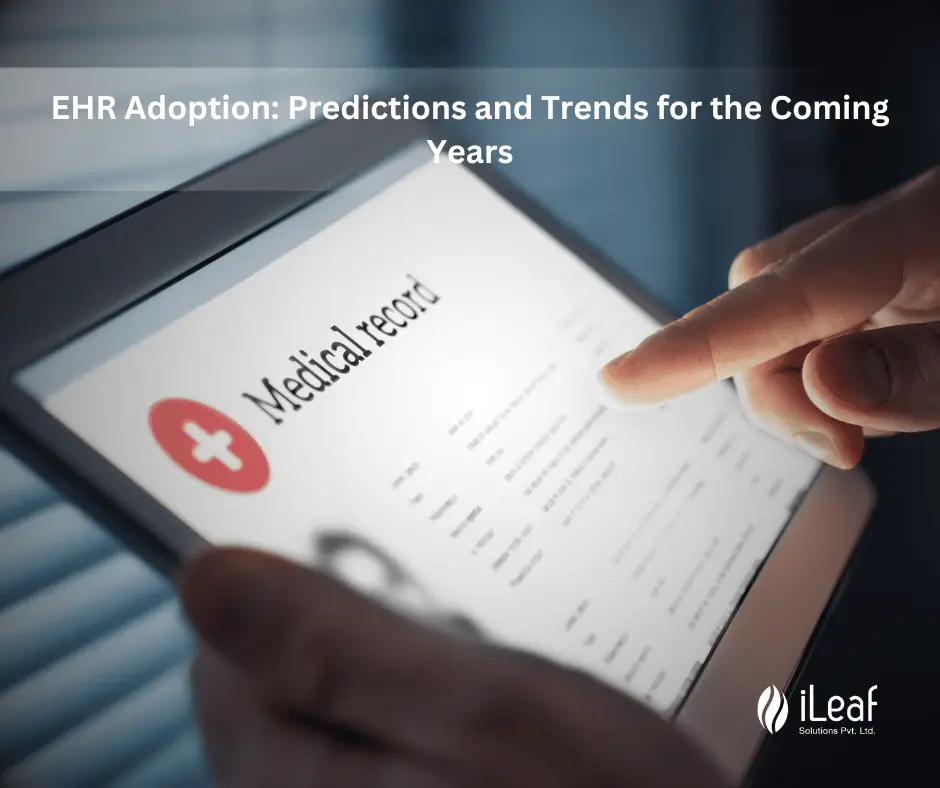EHR Adoption - Predictions and Trends for the Coming Years

Here's an overview:
- Introduction
- Challenges in EHR Adoption
- The Standardization Enigma
- Privacy Paradox
- Resource Rift
- User Interface Odyssey
- Bridging the Gap: Solutions for a Seamless Future
- Predictions and Trends for EHR Adoption
- Conclusion
Introduction
The healthcare landscape is poised for a revolution, driven by the ever-evolving world of technology. At the heart of this transformation lies the Electronic Health Record (EHR), a digital treasure trove of patient data promising to reshape medical care as we know it. But before we hurtle toward this futuristic vision, let's acknowledge the roadblocks on our path: the adoption challenges that still linger like phantoms of the past.
While EHRs whisper promises of enhanced patient care and streamlined workflows, their adoption journey isn't paved with digital roses. Beneath the shiny surface lurks a tangle of thorns, woven from standardization woes, privacy anxieties, resource constraints, and user frustrations. Conquering these challenges is not just an IT quest; it's a critical step towards unlocking the true potential of this transformative technology. So, grab your digital armor, fellow healthcare explorers, and let's delve into the labyrinth of EHR adoption challenges, uncovering both the obstacles and the ingenious solutions waiting to be unearthed.
Here we can list out the challenges
The Standardization Enigma: Imagine navigating a city where every street sign spoke a different language. That's the conundrum posed by the lack of standardized EHRs. Incompatibility between systems from different vendors creates communication silos, hindering information flow and jeopardizing patient care. Standardization, the Rosetta Stone of the healthcare IT world, is key to unlocking seamless data exchange and ensuring patient information travels seamlessly across different care settings.
Privacy Paradox: Our health data is our most personal possession, and rightly so. Data privacy and security concerns remain a formidable barrier to EHR adoption. Patients need ironclad assurances that their information is safe from breaches and misuse. Robust data encryption protocols, stringent access controls, and clear communication about data usage are essential to building trust and encouraging widespread adoption.
Resource Rift: Implementing and maintaining EHRs can be a resource-intensive endeavor. Smaller healthcare providers, particularly those in rural areas, might struggle with the costs of hardware, software, and training. Creative solutions are needed, such as cloud-based EHR platforms and financial incentives, to bridge the resource gap and ensure inclusivity in this digital healthcare race.
User Interface Odyssey: An unfriendly user interface can turn even the most sophisticated EHR into a frustrating labyrinth. Clinicians need intuitive interfaces that seamlessly integrate into their workflow. Streamlined data entry, voice recognition, and AI-powered decision support can all pave the way for a user experience that is not only functional but also empowering.
Bridging the Gap: Solutions for a Seamless Future
Here's a glimpse into the arsenal of solutions we wield:
The Standardization Cavalry: International efforts like HL7 FHIR (Fast Healthcare Interoperability Resources) are forging a common language for data exchange, promising interoperability across diverse systems. Imagine a world where patient records seamlessly follow them, regardless of the healthcare provider they visit.
Privacy Paladins: Blockchain technology, with its decentralized and secure nature, can play a pivotal role in safeguarding patient data. Imagine patients having complete control over who accesses their information, empowered by transparent audit trails and robust encryption.
Resource Rangers: Public-private partnerships and innovative financing models can bridge the resource gap, ensuring even the most remote healthcare providers access the tools they need. Imagine a future where telehealth and cloud-based EHRs democratize access to cutting-edge healthcare, regardless of location.
User Interface Architects: AI-powered assistants, gamified interfaces, and personalized dashboards can transform EHRs from clunky tools into intuitive partners. Imagine clinicians navigating patient records with the ease of a seasoned explorer, their every need anticipated and fulfilled by a responsive EHR system.
Predictions and Trends for EHR Adoption
With these solutions as our compass, let's venture into the exciting realm of predictions and trends:
Precision Medicine: EHRs, coupled with advanced analytics, will pave the way for personalized medicine, tailoring treatments to individual genetic profiles and patient histories. Imagine a future where healthcare becomes preventative, anticipating potential issues and intervening before they arise.
Telehealth Triumph: EHRs will fuel the rise of telehealth, blurring the lines between physical and virtual care. Imagine remote consultations, real-time data monitoring, and AI-powered diagnostics making healthcare accessible to even the most underserved communities.
Patient Empowerment: Patients will become active participants in their own healthcare journey, accessing their records, monitoring health indicators, and engaging in informed decision-making. Imagine a future where patients are not just recipients of care but empowered partners in their well-being.
Conclusion: A Call to Action
The road to a future powered by EHRs is paved with both challenges and exciting possibilities. By addressing the adoption hurdles, embracing innovative solutions, and harnessing the power of technology, we can unlock a healthcare landscape where personalized, preventative, and accessible care becomes the norm. This is not just a technological quest; it's a call to action, a collective effort to shape a future where health thrives and human potential flourishes.














